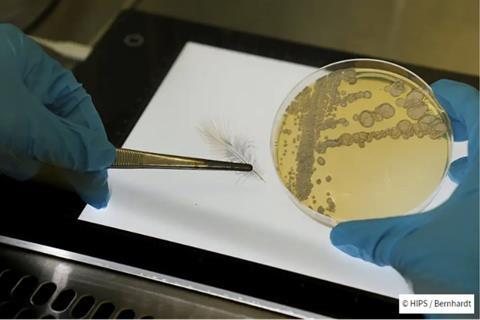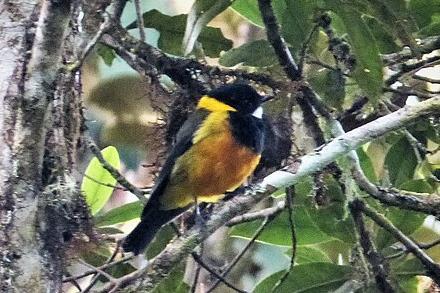A research team has identified two new classes of active substances with antimicrobial properties from bacteria that live in symbiosis with a toxic bird. This strategy and the substances discovered offer promising avenues towards the development of new anti-infectives, particularly against antibiotic-resistant pathogens.

The researchers from Helmholtz Institute for Pharmaceutical Research Saarland (HIPS) published their findings in the journal Nature Communications. The HIPS is a site of the Helmholtz Centre for Infection Research (HZI) in collaboration with Saarland University.
READ MORE: Ticks’ secret allies: Bacteria’s hidden hand in tick survival
READ MORE: Beewolves protect symbiont microbes from toxic gas release
The New Guinea-based regent whistler, or Pachycephala schlegelii in Latin, carries batrachotoxin in its black and yellow plumage: a potent neurotoxin, also used by poison dart frogs to effectively protect themselves from predators. This toxin is not produced by the birds themselves, but is enriched from insects that serve as food.
Symbiotic bacteria
Researchers at the Helmholtz Institute for Pharmaceutical Research Saarland (HIPS), together with international partners, have now discovered that the plumage of the regent whistler contains other substances that protect it from infestation by unwanted microorganisms. Unlike batrachotoxin, however, these substances are not ingested with food, but are produced by bacteria that live in symbiosis with the bird.

An international team led by Christine Beemelmanns, HIPS Department Head and Professor of Medical-Pharmaceutical Microbiota Research at Saarland University, isolated these bacteria of the genus Amycolatopsis from the secretions of the uropygial gland, a skin gland of the bird.
Bioactive substances
The researchers were able to discover previously unknown bioactive substances in these bacteria, including two new classes of natural products: pachycephalamides and demiguisines.
“The discovery of these previously unknown molecules from the microbiome of a bird illustrates the enormous potential that symbiotic relationships offer for the identification of new natural products,” explains Elena Seibel, first author of the study.
“Where different organisms live together, there are always interactions. In the case of microorganisms, this communication takes place with the help of chemical signals.” Natural products discovered in this way not only help to better understand the interaction between two organisms, but can also contribute to the development of new anti-infectives.
Microbiome source
This innovative approach, in which microbial communities (also known as microbiota) serve as a source of new active substances, is at the core of Christine Beemelmann’s research. Together with her team, she is working on the discovery and functional analysis of new anti-infective natural products from microbiota.
Using co-cultivation studies and cell-based assays, the researchers were able to show that the substances produced by the bacteria in the brush gland have an antimicrobial effect. In particular, the new compounds act against keratinolytic bacteria and fungi that attack the skin and feathers of birds.
“Our work impressively demonstrates that the identification of new bioactive natural products from microbial communities is a promising source for the discovery of innovative anti-infectives,” explains Beemelmanns. “The newly discovered natural products, especially the lipopeptides and hexapeptides that we found in avian microbiomes, offer great potential for combating infectious diseases.”
Genetic blueprints
Through a combination of genetic and structural analyses, the team was able to decipher the genetic blueprints responsible for the production of these natural products and thus confirm their origin in the symbiotic relationship between bird and bacterium. The identification of such natural products has far-reaching significance, particularly in view of the increasing spread of antimicrobial resistance, which poses a serious challenge to modern medicine.
“By unlocking the potential of microorganisms in symbiotic communities, we can develop new therapeutic approaches to fight infections and counter the global resistance problem,” emphasizes Beemelmanns.
Topics
- Amycolatopsis
- Antimicrobials
- Bacteria
- batrachotoxin
- Christine Beemelmanns
- Elena Seibel
- Healthy Land
- Helmholtz Centre for Infection Research
- Helmholtz Institute for Pharmaceutical Research Saarland
- One Health
- Pachycephala schlegelii
- Pharmaceutical Microbiology
- regent whistler
- Research News
- UK & Rest of Europe
- uropygial gland







No comments yet